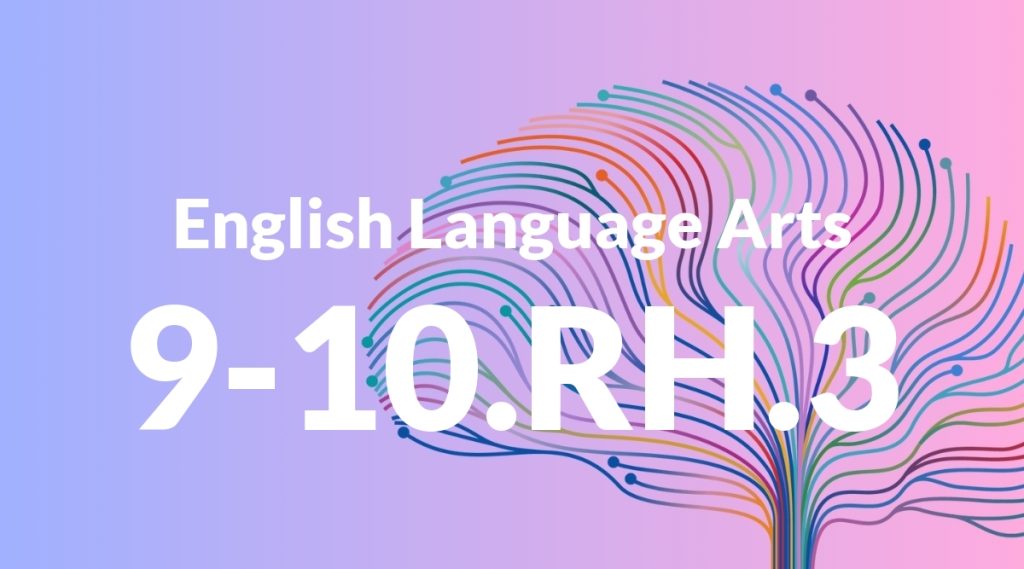Standard: 9-10.RH.3 – Analyze in detail a series of events described in a text; determine whether earlier events caused later ones or simply preceded them.
Grade level: Grade 9-10
Subject: English Language Arts
Domain: History/Social Studies
Teacher Overview
This standard focuses on developing students’ ability to analyze sequences of events in texts, particularly in history and social studies. It’s crucial for understanding how events are interconnected and for distinguishing between causation and mere succession. Students should understand basic chronological order and cause-effect relationships, and be able to identify main ideas and supporting details in texts.
After mastering this standard, students will be able to evaluate complex texts, draw connections between different events, and apply their analysis to various subjects such as history, literature, and social studies.
Common Misconception 1
A common misconception is that students might think all earlier events directly cause later events. This is incorrect because not all sequences imply causation; some events may simply precede others without causing them.
Intervention 1
To address this, teach students to look for specific evidence in the text that indicates causation, such as phrases like ‘as a result’ or ‘due to,’ rather than assuming a chronological sequence implies a cause-effect relationship.
Common Misconception 2
Another misconception is that students might believe events occurring close together in time are always related. This is incorrect because proximity in time does not necessarily imply a causal relationship.
Intervention 2
Encourage students to consider other possible explanations and to look for textual evidence that explicitly connects events, such as direct statements or logical reasoning within the text.
Prerequisite Knowledge
Students should have a basic understanding of chronological order, cause and effect relationships, and the ability to identify main ideas and supporting details in a text.
Subsequent Knowledge
Students will develop advanced critical thinking skills, including the ability to evaluate complex texts, draw connections between different events, and apply their analysis to various subjects such as history, literature, and social studies.
Instructional Activities
- Create a timeline of events from a historical text and discuss which events caused others.
- Analyze a short story to identify the sequence of events and determine causality.
- Use news articles to practice distinguishing between events that are causally related and those that are not.
- Group discussions on different interpretations of event sequences in a given text.




